|
The Alabaster Effigies of John and Isabella Barton
|
|
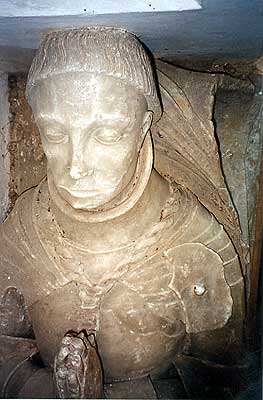 |
(pic. left) The upper part of the effigy of John Barton. The collar of twisted cord round his neck is very unusual. Its pendant, in the form of a lion, undoubtedly represents the white Lion of March, which is normally shown attached to the Yorkist collar of Suns and Roses on monuments of the supporters of the House of York during the Wars of the Roses (Lancastrian supporters wore the Collar of SS). He died, however, long before a widespread Yorkist faction had developed. It is likely, therefore, that the Lion of March pendant which he wears on a much simpler collar indicates that he was actually in the service of Richard Duke of York (1411 - 1460), father of King Edward IV.
John Barton's Will requested the rebuilding of the north chapel as a chantry for himself and his parents. This was duly done and the licence for it was granted on 4th July 1468, which must have been about the time when these effigies were made at one of the midlands alabaster workshops almost certainly at Chellaston, near Derby. They rank alongside high-quality work of the period, including monuments at Norbury (Derbyshire), Stanton Harcourt (Oxfordshire), Ryther and Methley (Yorkshire), Salisbury Cathedral, St. Helen's Bishopsgate, London and at the Churches Conservation Trust's church at South Cowton in Yorkshire. The figures of John Barton and his wife Isabella (originally beneath the lost north chantry chapel arch) which now are by the west entrance, beneath the gallery, are those of John Barton, who died in 1437 and Isabella who died in 1457, having married Sir Robert Shotesbrook. John Barton lies on the south side clad in armour, his hands folded in prayer his sword by his side and his resting upon a helm. Some of the original colour can be seen on both figures. |
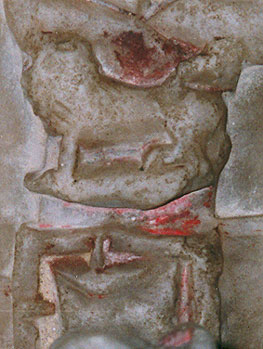 |
Extract from letter from Mark Downing of the Church Monuments Society to B. Egan, dated 18th May 2003.
"Firstly I would like to mention that the effigy might date from the early 1460's when Edward IV seized the crown and introduced the Yorkist collar with the Lion of March pendant. In almost all cases from the Yorkist period the collar is decorated with alternate Suns and Roses with the Lion of March pendant, but at Thornton it has a plain chain." It seems that Mr. Downing missed something, because looking closely at the upper body, just above the hands (pic. left), you can see a Lion of March pendant, still with some colour. |
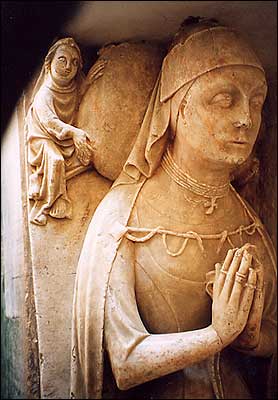 |
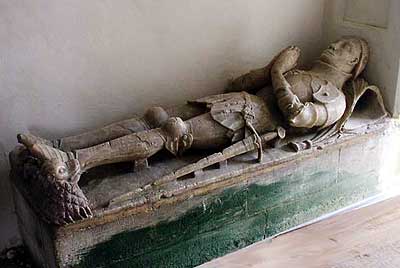
|
|
Isabella Barton 's head rest on a cushion, held by two small figures, the one which you can see was remodelled in the Victorian period. Her cloak is held with a cord attached to two clasps. She wears a necklace of five cords and a cross and a headdress of the period. Notice the number of rings on her hands.
There are two little dogs at the feet of her skirt. The detail of her clothing is beautiful and there are traces of the original red colouring. |
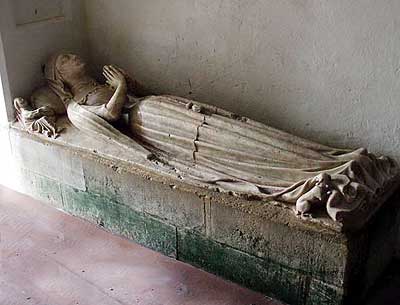 |
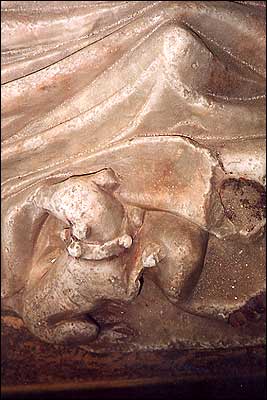 (pic. left) Lapdog with a collar and bells attached. |
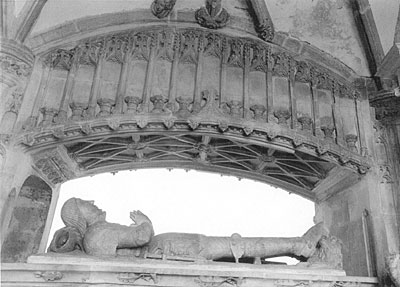 The pictures (above right and below) are of James I, 11th Lord Berkeley, 1463 and son |
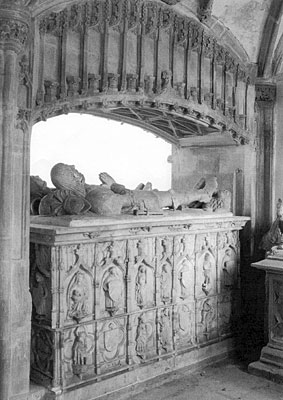 |
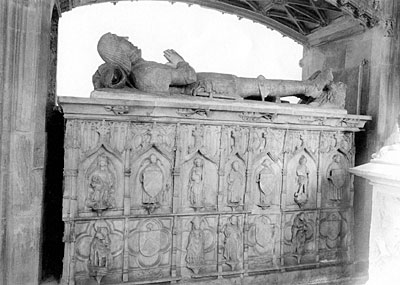 The figure and tomb chest are made of alabaster, the canopy and side are of freestone. |